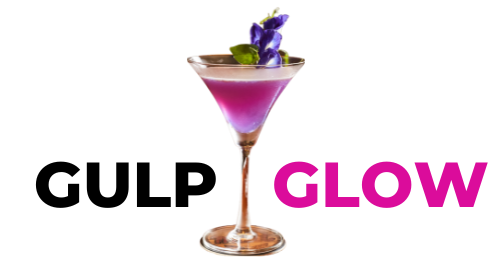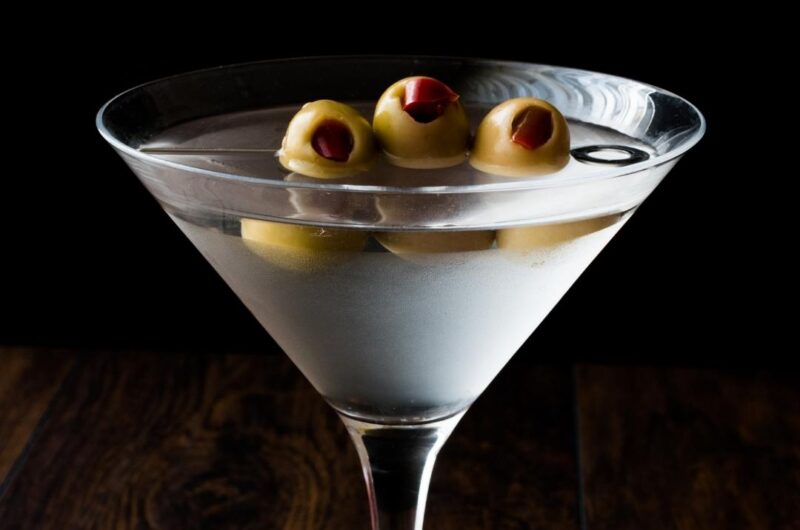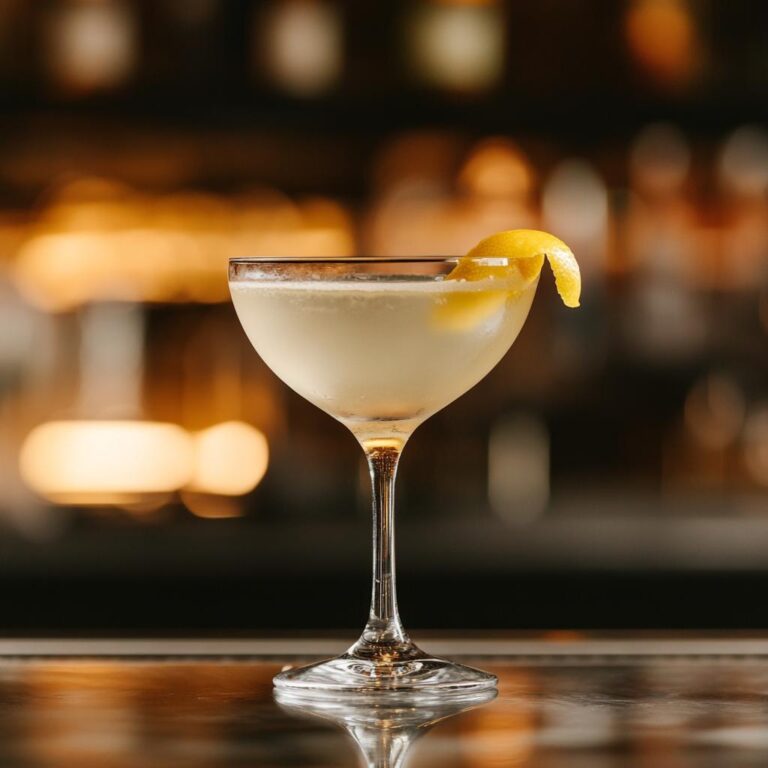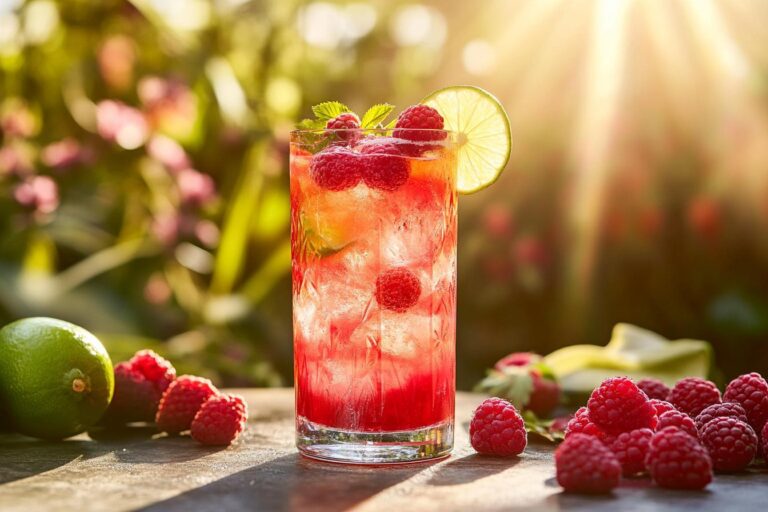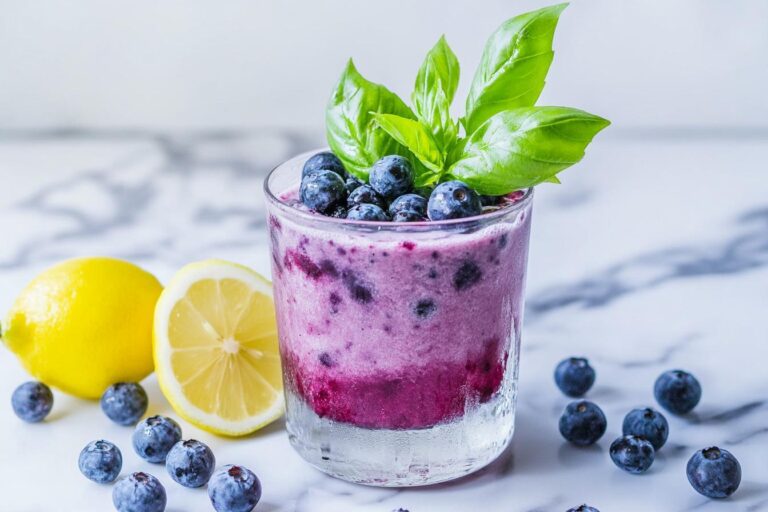Classic Martini: The Quintessential Sip of Sophistication
The Classic Martini is a drink of clarity, both in composition and character. Equal parts ritual and refreshment, this elegant cocktail is one of the most iconic in history—evoking everything from James Bond’s dry bravado to the dim-lit glamour of early 20th-century hotel bars. With just two (or maybe three) ingredients and endless personalization, it remains a timeless favorite that straddles simplicity and finesse.
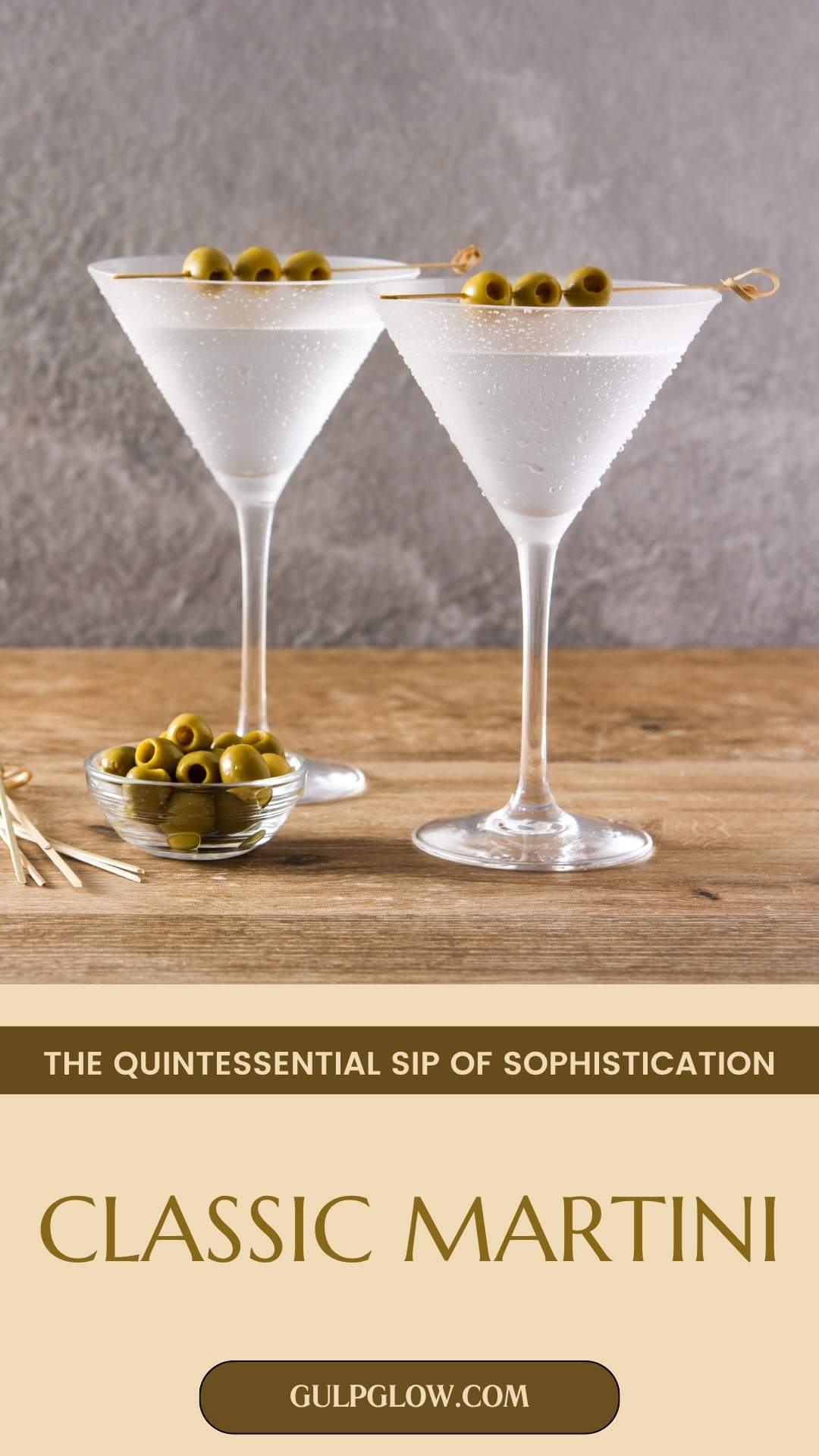
Whether you prefer gin or vodka, dry or wet, lemon twist or olive, the martini is less about rules and more about precision. It’s a drink that rewards attention to detail. And when made well, the result is crisp, bracing, and deeply satisfying—a liquid snapshot of cool control.
I still remember my first properly made martini: served in a chilled coupe with a lemon twist that snapped with citrus oil, the gin ice-cold and perfectly diluted. It wasn’t flashy—it was refined, and it made me understand why this cocktail has endured for more than a century.
Quick Facts: Classic Martini
Method: stirred
Flavor profile: crisp, herbal, dry (or slightly sweet)
How to serve it: up (no ice)
Glassware: coupe or martini glass
Alcohol content: ~28–32% ABV, ~24–26 grams of alcohol per serving
Ingredients
- 2½ oz London dry gin (or vodka)
- ½ oz dry vermouth (adjust to taste)
- Optional: 1–2 dashes orange bitters
- Garnish: lemon twist or green olive
- Ice (for stirring)
Notes on Ingredients:
Gin vs. Vodka:
- Gin provides botanical complexity (juniper, citrus, spice). Choose a London dry or floral-forward style.
- Vodka gives you a cleaner, more neutral flavor. Ideal if you want the vermouth or garnish to shine.
Vermouth:
Use a fresh, quality dry vermouth, kept refrigerated after opening. Options include:
- Noilly Prat – herbal and balanced
- Dolin Dry – light and floral
- Martini & Rossi Extra Dry – classic, bracing
Bitters (optional):
A dash of orange bitters brings out citrus notes and unifies the drink—a nod to the original pre-Prohibition recipes.
Equipment Needed
- Mixing glass
- Bar spoon
- Jigger
- Hawthorne or julep strainer
- Chilled coupe or martini glass
- Citrus peeler or olive pick
- Fine strainer (optional)
A clean, cold setup is key to getting that crystal-clear, perfectly diluted martini. Keep your glassware in the freezer for at least 10 minutes before serving.
Step-by-Step Instructions
1. Chill your glass.
Place your coupe or martini glass in the freezer or fill with ice and water to chill thoroughly.
2. Combine ingredients in a mixing glass.
Add to mixing glass:
- 2½ oz gin or vodka
- ½ oz dry vermouth
- Optional: 1–2 dashes orange bitters
3. Add ice and stir.
Fill the mixing glass with ice and stir gently but firmly for 25–30 seconds. You’re aiming for chill and slight dilution—not cloudiness.
4. Strain into chilled glass.
Empty your chilled serving glass. Using a strainer, pour the cocktail cleanly into the glass. Use a fine strainer for extra polish if desired.
5. Garnish and serve.
- For a clean, aromatic finish, twist a lemon peel over the drink to express oils, then discard or drop in.
- For a more savory touch, add a green olive on a pick.
Serve immediately. The martini waits for no one.

Flavor Profile and Tasting Notes
The Classic Martini is bone-dry, brisk, and aromatic—a spirit-forward drink that celebrates quality ingredients and technique.
Tasting notes include:
- Crisp juniper and citrus (with gin)
- Herbal, floral, or grassy tones from vermouth
- Slight salinity or zest from the garnish
- Clean, dry finish that leaves the palate refreshed
Vodka-based versions are cleaner and cooler, often preferred by those who want less botanical interference. Gin-based martinis offer a richer, more complex sip.
Pairs well with:
- Oysters or shrimp cocktail
- Lightly salted almonds or Marcona almonds
- Cured meats or caviar
- Aged cheeses (like Manchego or Parmesan)
- Smoked salmon or sushi
Garnishing and Presentation
The presentation of a martini is understated elegance: no frills, just gleam and garnish.
Glassware:
- Coupe glass for vintage charm
- Martini glass for classic lines and drama
- Chill thoroughly for clarity and temperature control
Garnish options:
- Lemon twist – adds a bright citrus note
- Green olive – brings salt and umami
- Cocktail onion – transforms the drink into a Gibson
- Orange peel (if using orange bitters) – ties the flavors together
- Optional: serve with a sidecar (a tiny carafe of the extra cocktail on ice)
Keep it simple—this is a drink of restraint.
Pairing Suggestions
Because the martini is dry and spirit-forward, it pairs best with light, salty, or briny dishes that enhance rather than overpower its profile.
Appetizer pairings:
- Oysters on the half shell
- Deviled eggs with smoked paprika
- Anchovy toast or tapenade
- Charcuterie boards with pickled elements
- Cucumber tea sandwiches
Snack pairings:
- Mixed olives
- Almonds roasted with rosemary or sea salt
- Cheese crisps or Parmesan tuile
- Dill pickles or cornichons
Avoid sweet or heavy dishes, which will clash with the martini’s dry sharpness.
Cocktail History and Trivia
The martini’s origins are debated, but most point to the late 1800s in America. Some believe it evolved from the Martinez cocktail (gin, sweet vermouth, maraschino), while others trace it to bartenders in New York or San Francisco tweaking gin slings and vermouth drinks.
By the 1920s and 30s, the dry martini had emerged as the drink of choice for high society—and it only grew in popularity through Hollywood glamor and literary acclaim. Think Cary Grant, Dorothy Parker, and, of course, James Bond.
Though Bond famously asked for his martini “shaken, not stirred,” most bartenders agree that stirring preserves the martini’s clarity and texture. Shaking introduces air and ice shards, resulting in a slightly different (though still drinkable) experience.
Serving Suggestions
The martini shines in refined or intimate settings. Serve it:
- As a pre-dinner aperitif—dry and appetite-whetting
- At cocktail parties—elegant and conversation-starting
- With shellfish or charcuterie boards
- As a signature welcome drink at formal events
If serving to guests:
- Pre-batch gin and vermouth in a chilled bottle
- Stir individual servings with ice
- Garnish to taste
For warm evenings or al fresco events, try freezing the glassware and the martini base in advance for a crisp, cold experience.
Alcohol Content and Alternatives
A standard martini is potent, with ~28–32% ABV, depending on gin, vermouth, and dilution.
To lighten the drink:
- Use more vermouth (try a 2:1 or even 1:1 ratio)
- Serve with a splash of soda over ice for a martini highball
- Try a Reverse Martini: 1½ oz dry vermouth, 1 oz gin
Mocktail version:
- 2 oz Seedlip Garden (or other non-alcoholic spirit)
- 1 oz white verjus or non-alcoholic dry vermouth
- Stir and strain into a chilled glass
- Garnish with lemon peel
This keeps the ritual and structure, without the alcohol.
Frequently Asked Questions (FAQ)
What’s the perfect gin-to-vermouth ratio?
Classic is 5:1 or 3:1, but you can go anywhere from 2:1 (wetter) to 15:1 (extra dry). Experiment to find your balance.
Can I shake a martini?
Technically yes, especially for vodka martinis. But purists prefer stirred for texture and clarity.
What’s a dirty martini?
A martini with a splash of olive brine added. Savory and slightly salty—an acquired taste for some.
How long does vermouth last?
About 1–2 months refrigerated. Vermouth is wine-based and will oxidize over time.
Can I use flavored bitters?
Yes! Orange bitters are classic. Grapefruit or lavender can add a fun twist if used sparingly.
Classic Martini Recipe
Ingredients
2½ oz gin or vodka
½ oz dry vermouth
Optional: 1 dash orange bitters
Garnish: lemon twist or olive
Ice (for stirring)
Directions
- Chill your serving glass.
- Stir all ingredients with ice for 25–30 seconds.
- Strain into glass.
- Garnish and serve immediately.
Conclusion
The Classic Martini is more than a drink—it’s a statement. A celebration of clean flavors, precision, and timeless style. Whether you like it dry, dirty, shaken, or stirred, there’s no wrong way to enjoy it—only ways to refine it to your taste.
